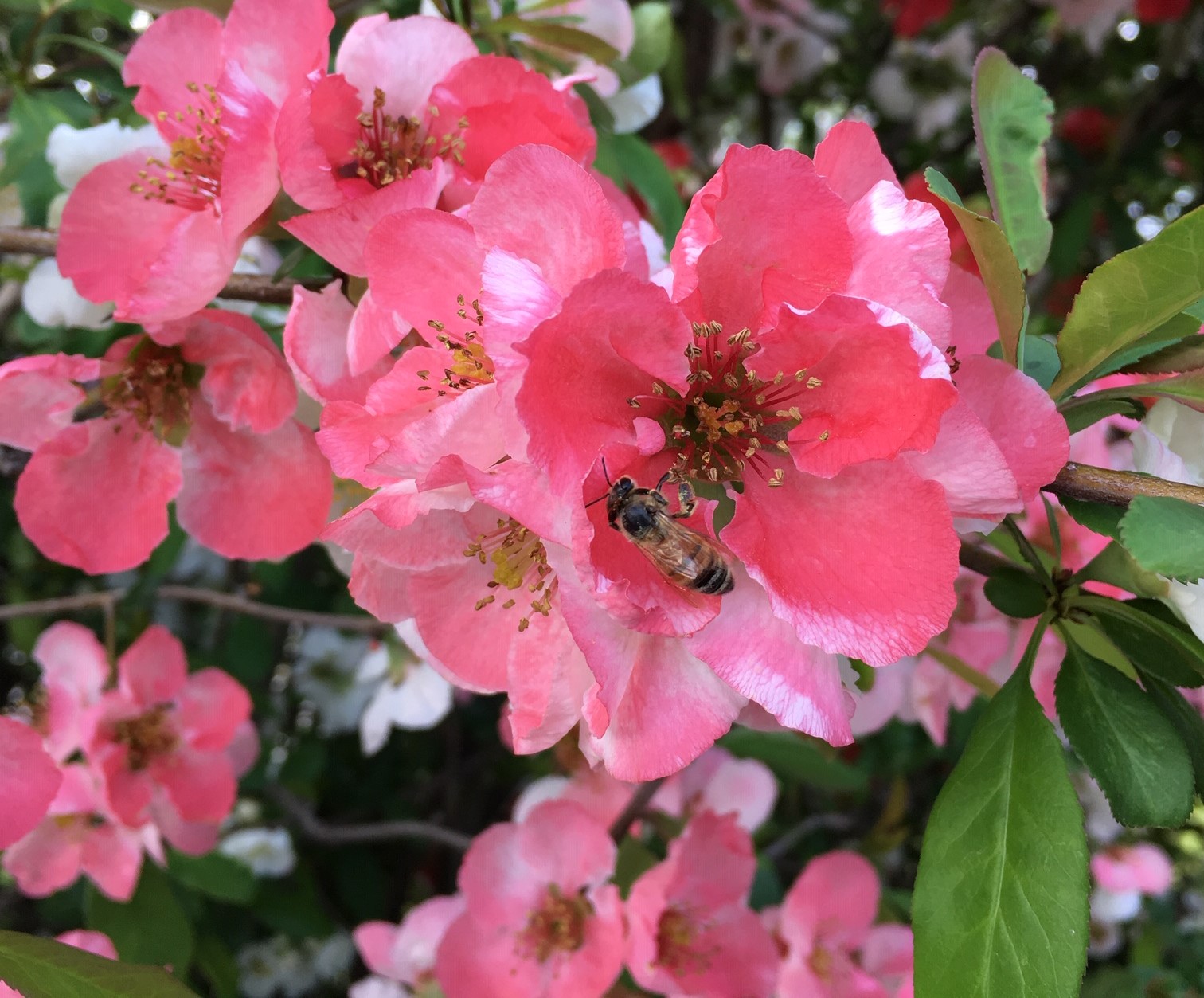
The other day I almost picked a quince. It was an incidental quince: The Japanese flowering quince shrub it was growing on had been planted for stunning coral-and-white spring flowers, not for fruit. However, the plant hadn’t gotten that memo and had developed half a dozen substantial, apple-like fruits anyway. Unfortunately, the shrub wasn’t mine, so I left them for the birds and squirrels.
People often tell me they’d like to add fruit to their home gardens. The first thing I say is, “Look around. You may already have some.” Many of the woody ornamental plants in the rose family that we enjoy for their flowers have edible fruits, including roses, quinces, flowering crabapple trees, serviceberries (often called Juneberries), flowering plums, and weeping cherries.
It’s true that the ornamental varieties we plant for bloom may not bear much fruit, and the fruits are usually tart and best used for jelly, preserves, or chutneys. But as long as the plants haven’t been sprayed with insecticides, why not?
If you have sun and space, you may also be able to grow raspberries, blackberries and black raspberries (three separate species, all in the rose family). These thorny shrubs take commitment: Without regular pruning, they’ll grow into a tangled, thorny thicket and won’t bear as much fruit. But what a tasty treat! If I had the room, I’d grow black raspberries before I’d grow more tomatoes.
Grapes, too, can be grown in a backyard, on a sturdy fence or trellis in full sun. My favorite is the hardy variety Concord, an early fall treat. To bear a reasonable crop, a grapevine also will need serious yearly pruning.
Of course, not everybody can grow any kind of fruit. For example, blueberry bushes need acid soil, which is hard to come by in the Chicago area. The best way to grow them around here is to choose dwarf plants and grow them in containers, with a relatively acid potting mix. You’re not likely to grow yourself enough blueberries in a pot to fill a pie, but it can be fun to try.

Peaches and apricots don’t do well here either, because of our volatile spring weather: Too often, a late freeze blasts the early-blooming spring flowers and destroys the hope of fruit. Apples seem to be a little tougher. I once met a man who had packed 150 dwarf apple trees into a modest suburban back yard.
However, our springs are becoming even more unpredictable as the climate changes, and that may affect the prospects for all kinds of fruit across the Midwest.
One solution is a greenhouse—an enclosed space where you can control a bit of the climate. In fact, some of the earliest European greenhouses, built for kings and nobles in the 17th and 18th centuries, were orangeries, specifically constructed to shelter tender fruit trees.
If you have a greenhouse or conservatory and you’d like to try citrus fruits, a Meyer lemon or kumquat tree is a good place to start. Both are modest-sized plants and relatively easy to grow. Also, a kumquat is so much fun to eat, with sweet, tender skin that bursts in your mouth to release the sweet-tart flesh. Fireworks! (Roger Marshall also recommends Key limes.)
Whether indoors or out, growing fruit (on purpose, that is, not incidentally) will take some work and some learning. An apple tree, for example, needs a particular pruning technique to maximize the sunlight that reaches each ripening fruit, and probably will require spraying for fungus diseases. It’s important to do your research before you dive in. The University of Illinois Extension website is a good place to start.
Or, you can just enjoy the incidental rose hips, crabapples and quinces that turn up on your flowering shrubs and trees. If you don’t, the birds will.










